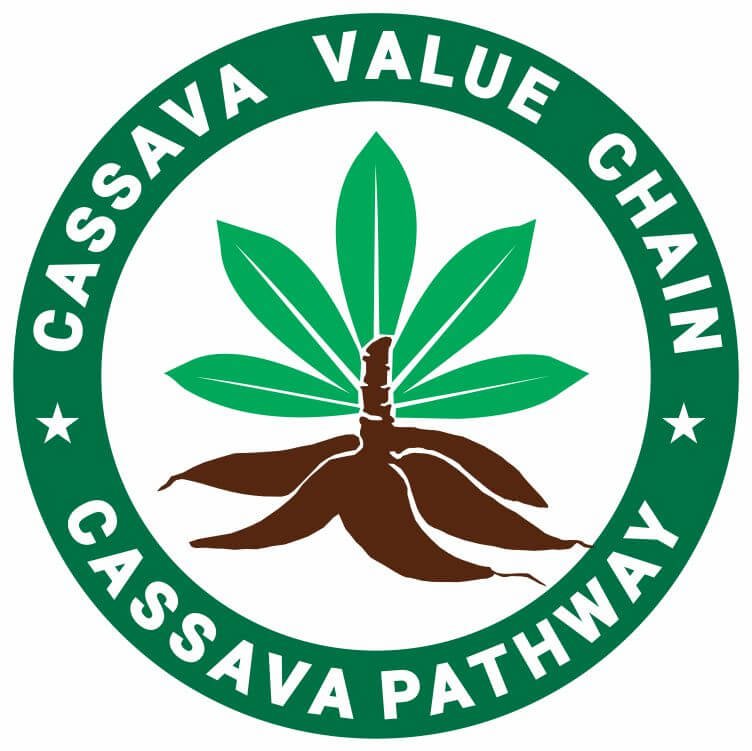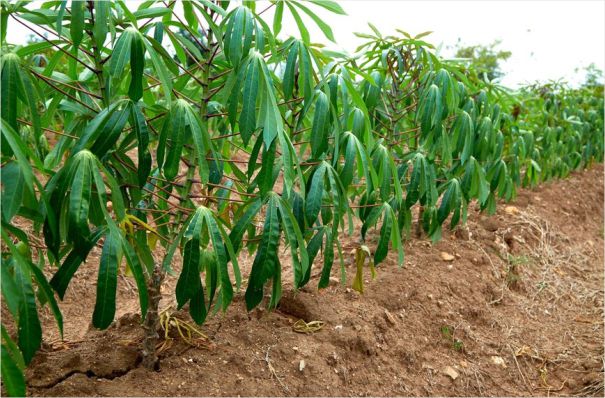Achieving high yields in cassava farming depends heavily on meeting the soil requirements for cassava.
The cassava crop thrives best in well-drained, fertile soils with a neutral to slightly acidic pH and good organic matter content.
Proper soil preparation, including adequate aeration and balanced nutrient levels, supports healthy root development and maximizes tuber production.
In this post, we’ll dive into the ideal soil conditions for cassava cultivation and offer practical tips to ensure your soil is optimized for the best results.
Related: The Standard Intra and Inter-Spacing for Cassava
Table of Contents
- Importance of Meeting Cassava Soil Requirements
- Key Soil Requirements for Cassava
- Soil Fertility and Organic Matter
- Drainage and Moisture Management
- Soil Testing and Monitoring
- Sustainable Soil Management
- Common Soil-Related Challenges in Cassava Farming
- Conclusion
Importance of Meeting Cassava Soil Requirements
Effective cassava cultivation requires attention to soil management practices, including nutrient conservation and enhancement of soil structure.
Ensuring that soil conditions such as pH level, texture, and organic matter content are conducive to cassava cultivation directly correlates with higher yields.
This emphasis on soil quality supports cassava growth and contributes to the broader objective of achieving food security through sustainable agricultural practices.
Related: Crops that Can Pair with Cassava
Key Soil Requirements for Cassava
Cassava thrives when specific soil conditions are met. Soil health directly impacts cassava yield, making it critical to understand the unique requirements of this resilient crop.
From soil type to fertility, pH, and drainage, every element must align to ensure optimal productivity.
Let’s take a closer look at these requirements in detail and uncover strategies to meet them.
1. Soil Type and Structure
Cassava thrives in well-drained sandy loam or loamy soils, which provide an ideal mix of drainage and nutrient retention.
Among these, sandy loam stands out for its ability to let excess water escape while holding onto just the right amount of moisture and nutrients needed by cassava roots.
This balance is crucial, as it prevents waterlogging, a condition that can lead to root rot, nutrient depletion, and hindered growth.
What makes sandy loam particularly suitable is its structure, which encourages deep root penetration and promotes aeration.
This allows cassava roots to grow freely and access the nutrients and water essential for robust development.
On the other hand, heavy clay soils present significant challenges. Their compact nature often traps water, leading to soggy conditions that cassava struggles to tolerate.
However, if cassava must be cultivated in such soils, adding organic matter like compost can make a big difference.
Organic matter helps break up the dense structure, improving drainage and creating a more hospitable environment for cassava roots.
Related: How to Harvest Cassava Tubers
2. Soil pH for Cassava
Soil pH plays a big role in cassava growth, as it directly influences the availability of nutrients.
A pH range of 5.5 to 7.0 is ideal, providing a slightly acidic to neutral environment that supports optimal nutrient uptake.
In this range, essential nutrients such as nitrogen (N), phosphorus (P), potassium (K), and magnesium (Mg) are readily accessible to cassava roots, supporting healthy growth and development.
When soil pH dips below 5.5, the acidity can disrupt the nutrient balance, potentially leading to toxicity from elements like aluminum and manganese.
This condition may inhibit root function and overall plant health.
On the other hand, pH levels exceeding 7.0 can result in nutrient deficiencies, particularly of iron and phosphorus, which are less soluble in alkaline conditions and thus harder for cassava to absorb.
Suggested: The Right Way to Cut Cassava Stems
To maintain the optimal pH range, regular soil testing is important.
This practice provides accurate information about the soil’s current pH and helps guide corrective measures.
If the soil is too acidic, farmers can apply lime to gradually raise the pH to acceptable levels.
Conversely, if the soil is too alkaline, incorporating sulfur or other acidifying agents can lower the pH.
It is crucial to implement these adjustments gradually to avoid abrupt changes that could destabilize the soil’s ecosystem and adversely affect cassava growth.
Recommended: Cassava, Yuca, and Yucca: What is the Difference?
Soil Fertility and Organic Matter
High soil fertility is required for cassava to reach its maximum yield potential.
Cassava plants extract large amounts of nutrients from the soil, particularly nitrogen, phosphorus, and potassium.
Without replenishment, soil fertility can quickly decline, affecting both yield and quality.
To ensure fertile soil, do the following:
1. Incorporate Organic Matter
Adding organic materials like compost, animal manure, or green manure improves nutrient levels and enhances soil structure.
Organic matter also increases the soil’s water-holding capacity and supports beneficial microbial activity, both of which contribute to healthier cassava plants.
2. Apply Fertilizers Strategically
While organic amendments are valuable, balanced chemical fertilizers can supplement nutrient deficiencies.
For cassava, a fertilizer blend high in nitrogen, phosphorus, and potassium (e.g., NPK 15-15-15) works well.
However, fertilizer application should align with soil test recommendations to avoid overuse.
Related: How to Keep Cassava Stems Fresh till the Next Farming Season
3. Rotate Crops
Rotating cassava with nitrogen-fixing crops like legumes helps restore depleted nutrients.
This practice also breaks pest and disease cycles, promoting healthier soil.
4. Use Cover Crops
Cover crops prevent soil erosion, suppress weeds, and add organic matter when incorporated into the soil.
Options like cowpea, pigeon pea, or velvet bean are excellent choices for cassava fields.
Related: Environmental Impact of Cassava Farming
Drainage and Moisture Management
Cassava is highly drought-tolerant but still requires well-balanced moisture levels to thrive.
Effective drainage prevents waterlogging, which can suffocate roots, encourage fungal diseases, and limit nutrient uptake.
Conversely, extremely dry soils can stress the plant and reduce yield.
Here are some practical strategies for managing moisture and drainage:
1. Raised Beds or Ridges
Planting cassava on raised beds or ridges improves drainage by allowing excess water to flow away from root zones.
This is especially useful in areas with heavy rainfall or poorly drained soils.
2. Install Drainage Channels
Well-planned drainage channels redirect excess water from fields, minimizing the risk of waterlogging.
These channels should be designed to integrate seamlessly with the natural slope of the land.
Recommended: Signs Cassava is Ready for Harvest
3. Mulching
Mulch materials like dry grass, straw, or palm fronds can help retain soil moisture during dry spells.
Mulching also suppresses weeds, regulates soil temperature, and adds organic matter as it decomposes.
4. Irrigation Systems
In regions with prolonged dry seasons, installing drip or sprinkler irrigation systems can maintain consistent moisture levels without overwatering.
5. Erosion Control
Soil erosion is a major threat to cassava farming, particularly on sloped or hilly terrains.
Loss of topsoil depletes nutrients and reduces soil fertility, directly affecting cassava growth.
To combat erosion:
- Plant Cover Crops: Cover crops protect the soil from erosion by reducing the impact of raindrops and stabilizing the soil with their roots.
- Contour Farming: Aligning rows of cassava along the natural contours of the land slows water runoff and minimizes soil loss.
- Terracing: In steep areas, terracing creates flat planting zones that reduce erosion and retain water.
Related: Tips to Grow Cassava in Small Spaces
Soil Testing and Monitoring
Regular soil testing is a cornerstone of successful cassava farming.
By analyzing soil samples, farmers can gain insights into pH levels, nutrient availability, and organic matter content.
This information allows for targeted interventions, such as applying lime, fertilizers, or organic amendments.
Steps for Effective Soil Testing
- Collect soil samples from various parts of the field to get a representative analysis
- Send samples to a reputable laboratory for testing
- Review the results to identify deficiencies or imbalances
- Implement recommendations for soil amendments based on test results
Related: See When to Plant Cassava According to Your Region
Sustainable Soil Management
Long-term cassava farming requires sustainable soil management practices to maintain productivity.
These include:
- Crop Diversification: Growing a mix of crops reduces soil nutrient depletion and promotes biodiversity.
- No-Till Farming: Minimizing soil disturbance preserves its structure, reduces erosion, and maintains organic matter.
- Agroforestry: Integrating trees and shrubs into cassava fields enhances soil fertility, prevents erosion, and provides additional income sources like firewood or fruit.
Related: Climate Impact on Cassava Farming
Common Soil-Related Challenges in Cassava Farming
Although cassava is known for its resilience, soil-related challenges can significantly impact its growth and yield.
One major issue is poor drainage, which can lead to root rot and stunted plant development.
Excess water retention suffocates the roots and creates a breeding ground for diseases.
Another common challenge is nutrient deficiencies, which often manifest as yellowing leaves, weak stems, and lower yields.
Cassava requires a balanced supply of essential nutrients to thrive, and deficiencies can severely affect its growth.
Soil compaction is another concern, as it limits root penetration and water infiltration, hindering access to nutrients and moisture.
Additionally, acidic or alkaline soils can disrupt nutrient availability and uptake. When soil pH strays too far from the ideal range, cassava struggles to absorb the nutrients it needs.
Understanding and addressing these challenges ensures healthier crops and improved yields.
Conclusion
Optimizing soil conditions is key to achieving high cassava yields. By focusing on proper soil type, pH levels, fertility, and drainage, farmers can create an ideal environment for cassava growth.
Regular soil testing, the addition of organic matter, and effective moisture management are essential practices for maintaining soil health.
Overcoming common soil-related challenges like poor drainage, nutrient deficiencies, and soil compaction ensures that cassava plants have the necessary nutrients and conditions to thrive, ultimately boosting yields and contributing to sustainable farming practices.
References:
- https://www.ipipotash.org/publications/eifc-284
- https://scialert.net/fulltext/?doi=ijss.2011.142.149
- https://eos.com/blog/how-to-grow-cassava/
- https://agriculture.gov.tt/wp-content/uploads/2017/11/ROOTCROPBULLETIN1.pdf

Chimeremeze Emeh is a writer and researcher passionate about Africa’s most transformative root crop—cassava. Through his work at cassavavaluechain.com, he explores the entire cassava industry, from cultivation and processing to its diverse applications in food, health, and industrial use.
He also writes for palmoilpalm.com, where he shares his extensive experience and deep-rooted knowledge of palm oil, covering red palm oil, palm kernel oil, and refined products. His work there reflects his lifelong connection to agriculture and his commitment to promoting sustainable value chains in Africa.
Driven by curiosity and purpose, Chimeremeze aims to shed light on how cassava continues to empower communities, strengthen food systems, and link traditional farming wisdom with modern innovation.

